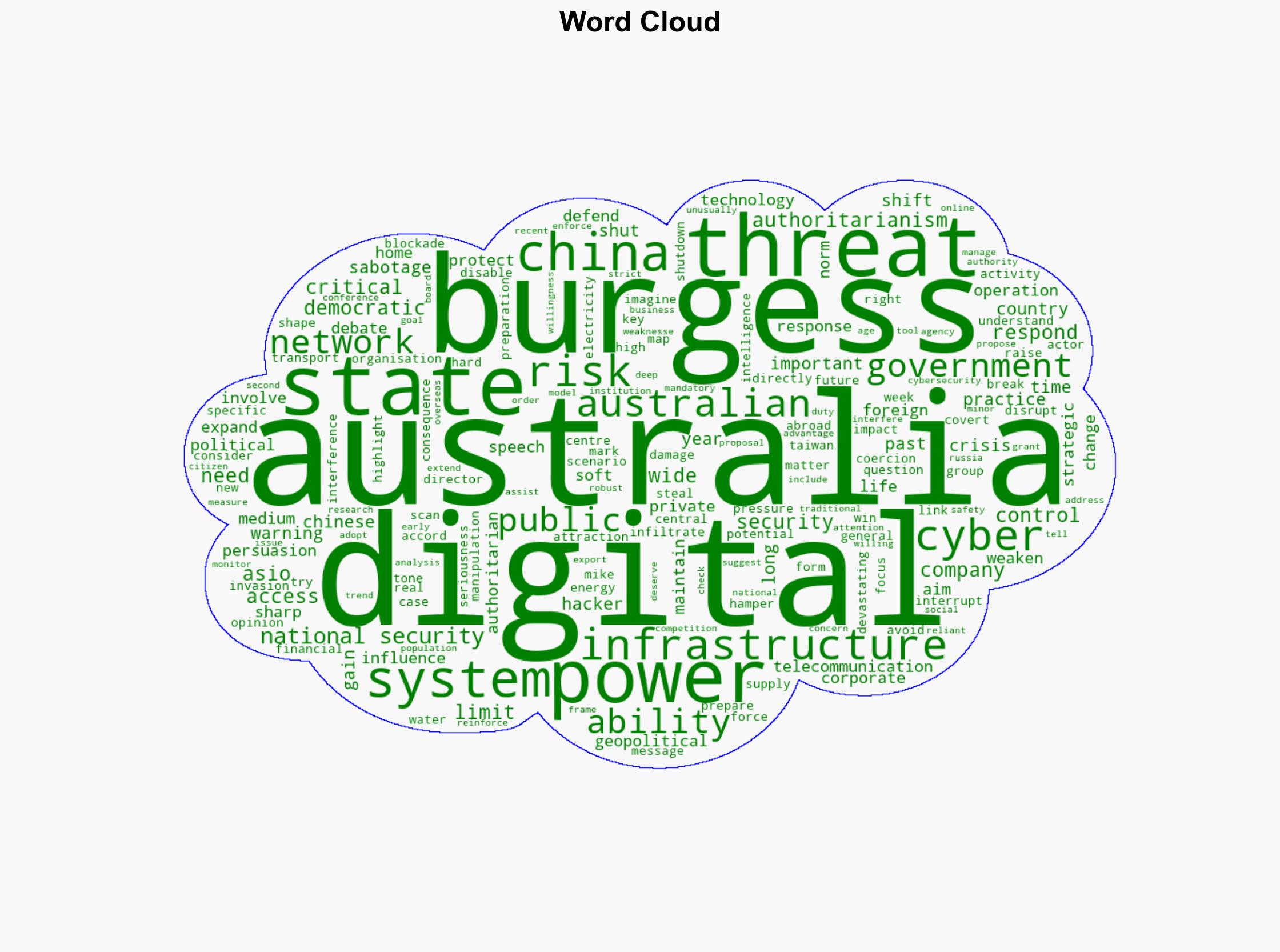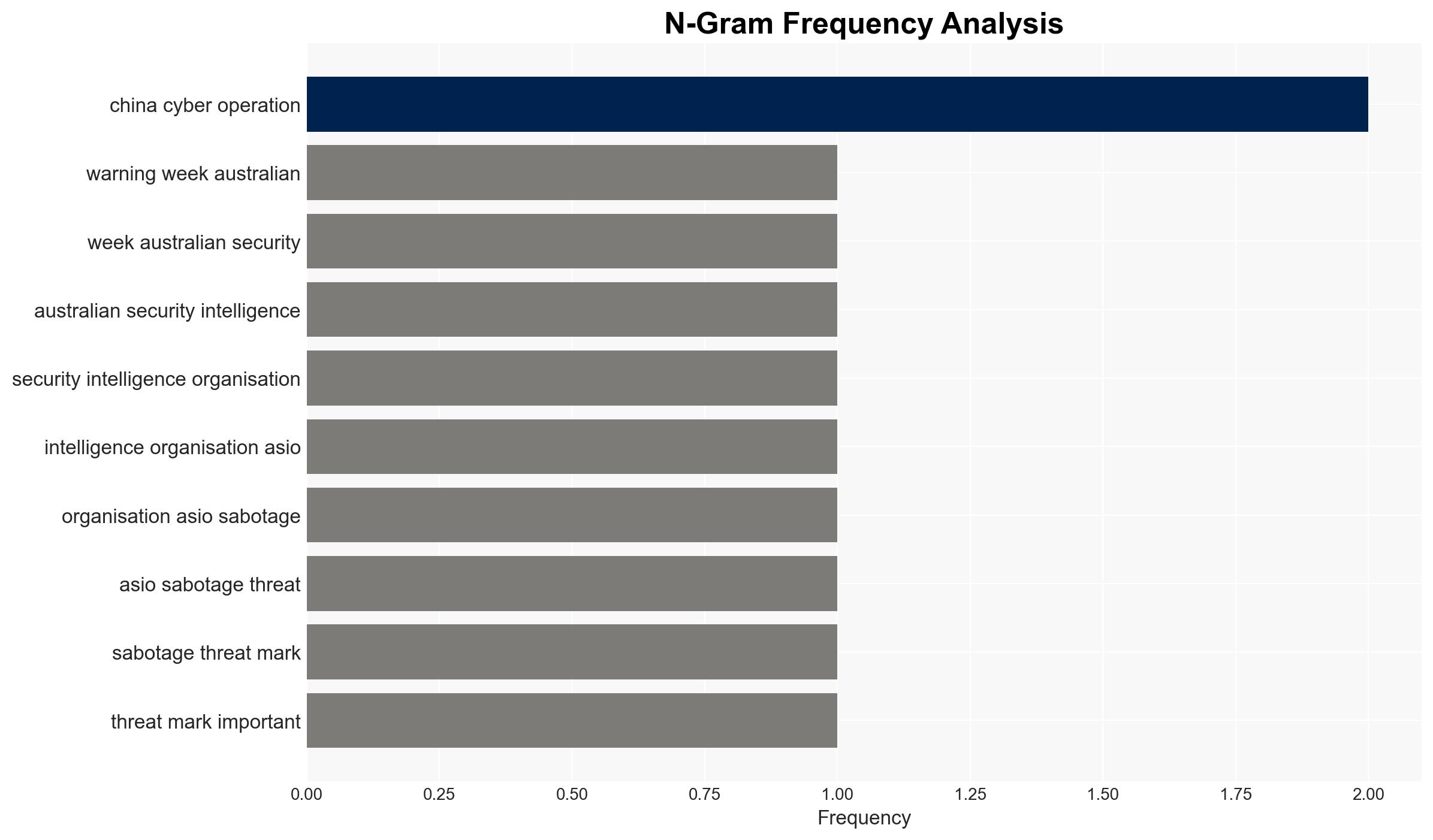The threat of sabotage from China is growing Thats not an excuse to erode Australians freedoms – The Conversation Africa
Published on: 2025-11-14
AI-powered OSINT brief from verified open sources. Automated NLP signal extraction with human verification. See our Methodology and Why WorldWideWatchers.
Intelligence Report: The threat of sabotage from China is growing Thats not an excuse to erode Australians freedoms – The Conversation Africa
1. BLUF (Bottom Line Up Front)
The strategic judgment is that while the threat of Chinese state-linked cyber sabotage against Australian critical infrastructure is credible, the response should balance national security with the preservation of democratic freedoms. The most supported hypothesis is that China is using cyber capabilities to prepare for potential geopolitical conflicts, such as a crisis over Taiwan, by targeting Australian infrastructure. The recommended action is to enhance cybersecurity measures while safeguarding civil liberties. Confidence level: Moderate.
2. Competing Hypotheses
Hypothesis 1: China is actively preparing for potential geopolitical conflicts by mapping and infiltrating Australian critical infrastructure to enable future sabotage.
Hypothesis 2: The perceived threat of Chinese cyber sabotage is exaggerated and serves as a pretext for the Australian government to expand surveillance and control over digital life, potentially eroding civil liberties.
Hypothesis 1 is more likely due to credible intelligence from ASIO and historical patterns of Chinese cyber activities targeting foreign infrastructure. However, Hypothesis 2 cannot be dismissed entirely, given the potential for domestic policy agendas to exploit external threats.
3. Key Assumptions and Red Flags
Assumptions: The assumption that Chinese cyber activities are state-directed and strategically motivated. The belief that Australia’s current cybersecurity measures are insufficient to counter sophisticated state-sponsored threats.
Red Flags: Lack of specific evidence linking recent cyber activities directly to the Chinese government. Potential bias in intelligence assessments due to political pressures or strategic interests.
Deception Indicators: Possible misinformation campaigns by state or non-state actors to manipulate public perception and policy decisions.
4. Implications and Strategic Risks
The primary implication is the risk of significant disruption to Australian critical infrastructure, which could undermine national security and economic stability. Escalation scenarios include heightened geopolitical tensions with China, increased cyber warfare, and potential retaliatory measures. Domestically, there is a risk of eroding democratic norms if cybersecurity measures infringe on civil liberties.
5. Recommendations and Outlook
- Enhance cybersecurity protocols across critical infrastructure sectors, focusing on resilience and rapid response capabilities.
- Maintain transparency and public accountability in cybersecurity policy to prevent overreach and preserve democratic freedoms.
- Engage in diplomatic efforts to establish international norms and agreements on state behavior in cyberspace.
- Best-case scenario: Strengthened cybersecurity measures deter potential threats without compromising civil liberties.
- Worst-case scenario: A major cyberattack disrupts critical infrastructure, leading to economic and political instability.
- Most-likely scenario: Continued low-level cyber intrusions with periodic escalations, prompting ongoing policy adjustments.
6. Key Individuals and Entities
Mike Burgess, Director-General of the Australian Security Intelligence Organisation (ASIO).
7. Thematic Tags
National Security Threats
Structured Analytic Techniques Applied
- Cognitive Bias Stress Test: Expose and correct potential biases in assessments through red-teaming and structured challenge.
- Bayesian Scenario Modeling: Forecast futures under uncertainty via probabilistic logic.
- Network Influence Mapping: Map influence relationships to assess actor impact.
- Narrative Pattern Analysis: Deconstruct and track propaganda or influence narratives.
Explore more:
National Security Threats Briefs ·
Daily Summary ·
Methodology





